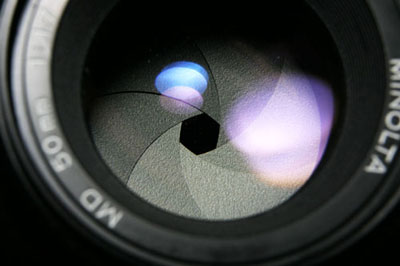I had toyed around with a couple of ideas for a spring equinox post, but haven’t gotten to any of them – perhaps later (I still have an hour!) But here’s something I just spent some time doing this evening, so I’ll remind you to do it too: clean your lenses!
Hopefully, you’re doing it routinely anyway, but this is my scolding reminder to do a spring cleaning. And since too few places outline how to do this well, I’m going to provide a quick guide. You will need:
A soft brush A squeeze-bulb blower, or a can of compressed air, not anti-static Lens cleaning fluid, or a 50/50 mix of alcohol and ammonia Lens cleaning cloths, or a microfiber cloth [A ‘lens pen” can be substituted for the above two in a pinch, but should not be a permanent replacement]
Hold the lens above your head, with the glass facing downwards, and use the blower to dislodge as much dust as possible. Despite many dire warnings, using canned air is fine for this, as long as you maintain a little distance, and always fire off a blast at nothing first, to clear any fluid that may be trapped in the valve – this fluid can stain or damage whatever it touches (it’s not freon, but it might as well be.) Note that the anti-static cans contain an additive that may have to be cleaned off, so don’t use those.
Still holding the lens in that position, use the soft brush to gently dislodge any remaining dust and stuff, turning it often. Do not scrub, just wipe gently. The goal with these two steps is to remove any coarse grit that may get trapped in the cloth and actually scratch the glass.
 Turn the lens so the glass is facing upright, and apply a drop of lens cleaning fluid to a cloth – never directly onto the lens. Gently, with a circular motion, wipe the lens surface from center to edges. Since some alcohols often leave a residue, you may want to follow up with a dry cloth (or corner thereof) to completely clean the lens.
Turn the lens so the glass is facing upright, and apply a drop of lens cleaning fluid to a cloth – never directly onto the lens. Gently, with a circular motion, wipe the lens surface from center to edges. Since some alcohols often leave a residue, you may want to follow up with a dry cloth (or corner thereof) to completely clean the lens.
If you really want to ensure that you’ve done a good job, examine the lens with a blue LED flashlight held at an angle – this will reveal any remaining oils or residues that may remain. That’s all – you’re done.
In the field or for quick cleanings, a lens pen usually works fine, but follow the same procedure as above – blow, brush, then wipe. You can blow by mouth but be careful, since it’s very easy to introduce some moisture when doing this.
I’m pretty careful when swapping lenses, and try to keep the insides of the camera clean, but it’s impossible to be perfect about this, and it means the digital sensor will get dusty, or even have stubborn stuff adhering to it. While I have brush-cleaned the sensor numerous times over the years, I had finally reached the point where it needed a “wet clean,” and the Eclipse™ that I’d ordered had arrived today. This is a very pure form of alcohol, even purer than most medical suppliers, and evaporates very cleanly – it can also be used for lenses, but is expensive and usually overkill. Following the directions for DIY cleaning found at CleaningDigitalCameras.com, I produced a spotless sensor in just a few minutes, a task that camera shops charge $100 and up for. Be warned that it is possible to damage your sensor doing this, and that’s a very expensive repair, but it’s not hard if you’re willing to take the precautions. I used a soft #10 artist’s brush for the first pass, and a homemade sensor wand and a microfiber cloth instead of the store-bought versions for the wet phase. I also do lots of crafty/fiddly projects, so season to taste – if you can’t use a cotton swab to remove something from your eye, it might be better to let a shop do the job.
While you’re at it, shake out your camera bag, or give it a good vacuuming – it’s easy to collect grit and stuff that can get into the camera. And clean all of your microfiber cloths and handy towels too – I just use baby shampoo for the microfiber cloths, since it removes oils without leaving a residue, but rinse numerous times to get everything out. I do the same for all the brushes I use. Store them in a small case to keep them clean, and if there’s the slightest chance they’ve been exposed to grit or sand, get them out of the bag so you won’t accidentally use them and scratch a lens. Just little things that might save you some frustration or expensive repairs.




















































